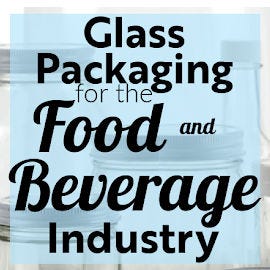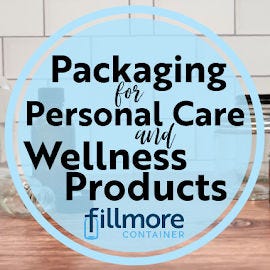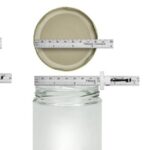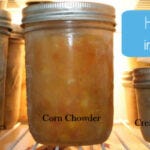
Glossary of Terms – Fillmore Container
This page includes Fillmore Container’s detailed glossary of terms that provides information ranging from container solutions to food processing, candle making to shipping information.
Accessorials:
An accessorial is a service or requirement that is beyond the base LTL freight shipment and usually carries an additional fee. Accessorials include, but are not limited to, a residential drop point, liftgate, inside delivery or limited access delivery. Learn more about LTL/freight shipments here.
Adhesion:
In candle making, this describes how well the wax holds on to the surface of the container. If you’re having trouble with adhesion (experiencing pull-away or wet spots) check out our troubleshooting guide.
Annealed Glass:
Annealed Glass is thermally treated and then cooled to relieve internal stresses introduced during the manufacturing process. For most glass products, the annealing temperature falls between 850 °F and 900 °F, which is the stress-relief point of the glass. Then, the pieces heat-soak until the temperature is consistent throughout and the stress relaxation is adequate. Canning Jars do go through an annealing process. (This is not the same as tempering; canning jars are not tempered.)
Blind Shipping:
Blind shipping is when as order is shipped from a facility to another party without notification as to who it is shipping from. The purpose of this practice is to avoid the customer knowing who sent it, and circumventing their original supplier in the future. We do not blind ship.
Carbon Ball Formation:
The formation of carbon at the tip of a wick during burning, also called “mushrooming”. Not all wicks form these, but if they do, the carbon ball should never be more than 5mm in diameter. Learn how to avoid this in our troubleshooting guide.
Commercial Delivery Location:
Commercial or Residential delivery status is a zoned location and is designated by the carrier. This is not related to whether you are commercially licensed to produce a product, or have a permit to run a business out of your home, or even a separate building that is on your residential property. If you are unsure about the delivery, please check with our customer service. Any fees associated with an inaccurate designation by the customer, including re-delivery attempts, etc are the responsibility of the customer.
Drop Shipment
Drop shipment is an order shipped from the manufacturer directly to you. We do drop ship orders for truck load sized orders, or in a few other time-sensitive situations.
Ember Glow
The glowing or smoking of the wick after it has been blown out. An important part of testing for safety and re-ignition potential, this length of time should not exceed 10 seconds.
CT:
Continuous Thread; as in a type of finish on the mouth of a jar, or of a lid. This refers to a jar or lid that has a single continuous thread that circles around the jar or the lid. There are different sizes and styles of CT finishes.
ETA:
ETA is your order’s Estimated Time of Arrival. Please note that it is estimated; based on our projected internal processing and the carrier’s timeline. We commit to processing orders as quickly as we can – always within our projected timeline. Once they leave our facility, we no longer have control over what happens to your order. Learn more here.
Expedited Shipping:
Expedited shipping is a service provided by the carrier and applies to orders after they leave our facility. These services are only available for ground/package orders. Learn more here.
Finish
The finish of a jar refers to the engineered design details (measurements and style) around the mouth and neck of the jar which determine the type of compatible lid or fitment (orifice reducers) or shrink bands. For example, one of our woozy bottles (G05-01C) has a 24-414 finish, and because the Item ID ends with a “C”, this indicates the lid required must be a 24-414 CT cap. The “24” refers to the diameter, the “414” refers to the skirt length (how far the lid comes down). Fortunately, we have linked the compatible lids & fitments to their proper jars and vice versa to save you the hassle. If you’re looking at a jar, you’ll find the properly fitting items listed under the “Accessories” tab.
Flashpoint:
The fragrance flashpoint is the temperature at which a fragrance can combust if exposed to open flame or spark.
Fragrance Load:
The fragrance load is a suggested range or value for the percentage of fragrance oil in a candle. Learn more about why this matters in our Fragrance Load post.
Girth:
Girth is sometimes used by delivery companies as a basis for pricing. For a rectangular box, the girth is 2 * (height + width), i.e. the perimeter of a projection or cross section perpendicular to its length.
Heat Shrink Bands:
Heat Shrink Bands are often used to increase customer confidence in your packaging. Learn more about them here.
Heel:
The lowest portion of a container, where the body of the jar/bottle curves into the base/bottom of the container.
Hermetic Seal:
An airtight, or vacuum seal which will completely prevent transfer of air/gases or liquid.
Hi-Heat Canning Lids:
Hi-heat canning lids are designed to withstand higher levels of heat and may be used in water bath processing. Hi-heat lids often feature a safety button located in the middle part of the lid to indicate the sealed contents in the jar. They are available in regular mouth and wide mouth. Find hi-heat plastisol lids here .
Hot Fill Process:
A preserving process in which hot product is dispensed into a hot jar, immediately capped with a warm lid. When performed properly, the vacuum created as the product cools is sufficient to result in a hermetic seal. This process is not approved by the NCHFP but can be authorized by a Process Authority for specific recipes during the process of attaining approval for producing a commercial product. This is sometimes referred to as “hot-fill and cool”. *This is only approved for certain recipes and products.
Hydrogenated:
Hydrogenated, or hydrogenation is a chemical process used on our site in reference to candle waxes. This chemical process adds hydrogen to the unsaturated fatty acid chains . In this way, an unsaturated fat can be turned into a saturated fat and increase its melting point, which in this case would make otherwise more liquefied compounds more able to perform as a candle wax.
IFRA Certificate:
The IFRA Conformity Certificate (or IFRA Statement as it is often referred) is a document established by the fragrance compound manufacturer and based on a trust relationship between the fragrance supplier and its customer. It sets out the safe use levels based on Classes of products. When applicable, these documents can be found in the product’s “Attached Documents” tab. Learn more about the IFRA here.
Induction Sealing:
A process produced by an induction machine. Heat produced by the machine bonds the specialized foil liner to the opening of the container (usually plastic). Because the liner remains in place until removed by the consumer, it is recognized as an acceptable method of tamper evidency by the FDA.
Label Panel Height:
Refers to the height of the smooth flat area of the jar on which you would apply a label. You can find label panel height information for Fillmore Container’s products under the product description details and/or specs chart.
Lay-Flat Measurement:
This is the length of the heat shrink band when it lying flat, prior to application and the form it is in when packaged and shipped. Learn more about our heat shrink bands in this post.
Lift Gate:
An attachment to the back of a delivery truck that allows the driver to lower a palletized order to the ground. This is required for delivery points where an appropriate dock or forklift is not available.
Lug:
As in the type of finish on the mouth of a jar, or a type of lid (also known as a twist cap). This refers to a jar finish that has several (the number varies) short threads that do not encompass the circumference of the mouth of the jar. This also refers to the lids which are designed for lug jars, and are also known as twist caps. Lug lids usually have a smooth exterior, with several (the number varies) nubs or lugs that match and thread onto the short threads of the lug jar.
LTL:
As in LTL Shipment; Less Than Truck Load, referring to a type of delivery method, often referred to simply as “freight”. Such orders are stacked on a pallet, carefully wrapped, labeled, weighed, and identified with a Bill of Lading (BOL). These do not have to be full pallets; as it’s the shipping cost that usually determines whether this is a more cost-effective shipment method.
MSDS:
A Material Safety Data Sheet (MSDS) *Now called the SDS Sheet* is a document that contains information on the potential hazards (health, fire, reactivity and environmental) and how to work safely with the chemical product. It is an essential starting point for the development of a complete health and safety program. When applicable, these documents can be found in the product’s “Attached Documents” tab.
NCHFP:
National Center for Home Food Preservation – the agency which approves and makes recommendations for home canning and provides a wealth of instruction, recipes, and tips of safe food preservation in a variety of processes.
Optimal Quantity for Shipping:
Applies to orders to be shipped in cartons, via UPS Ground. This is the number of cases of that item that will help to maximize your shipping $. Learn more about maximizing your shipping here.
Orifice Reducer:
A fitment or plug which when inserted into the mouth of the bottle, reduces the flow of a given product. The closure/lid fits over the orifice reducer.
Overflow Volume:
The volume of liquid the vessel will hold before it begins to overflow. This is not always equal to the stated volume.
Palletized:
Referring to an order which has been determined to be shipped on a pallet. Learn more about whether this is a viable shipping option for you in this post.
Pasteurization Process:
Often referred to as Low-Temperature Pasteurization; A process that involves a highly monitored lower process temperature (less than boiling), usually over a longer duration of time; often used to reduce stress & to maintain the texture of the product. Some of our lug lids are suitable for this process.
Phthalates
In the past, phthalates have been used in fragrance formulation to dissolve raw materials because of their superior solubility, high flashpoint, a reduced impact on odor, with a low skin safe toxicity. In light of questions and concerns over possible effects of high phthalate levels, we feel it would be best if our products didn’t post that risk.
Phenolic Lid
Phenolic Lids come with a polycone liner provides a wedge-type seal that seals both across the top of the container and the inside diameter. This black bottle cap is stress crack-resistant and offers superior torque retention and excellent sealing characteristics.
Plastisol:
A compound applied during manufacturing to lids for applications such as food canning and vacuum packing, because it provides a tamper evident and hermetic seal (or airtight seal.) When you open a metal closure and hear the “POP” noise, you know you have opened a plastisol lined closure. There are different plastisol formulas that determine the suitable applications such as standard, pasteurization, and hi-heat.
Pressure Canner:
The piece of equipment used in the Pressure Canning Process. Please note: this is NOT the equivalent of a pressure cooker. They are two distinct pieces of equipment and are not capable of performing the same function.
Pressure Canning Process:
The preservation process uses a combination of temperature and pressure to raise temperatures inside the jar above boiling. Some foods (like low acid foods) may only be canned using the Pressure Canning Process in order to kill the bacterium Clostridium botulinum.
Prop 65:
Prop 65 (California’s Proposition 65) addresses identification of and warnings related to a particular list of items which can be associated with health issues. Learn more here.
Residential Delivery:
Residential Delivery is determined by the carrier. A residential delivery is defined as delivery to a location that is a home, including a business operating out of a home.
Rush Processing:
Rush Processing refers only to our in-house processing of your order. See details here.
Scent Throw:
The reach and strength of your candle fragrance. Cold Throw: when it isn’t lit. Hot Throw: performance when it its lit, and has burned long enough to be forming a pool.
Steam Canning:
The canning process which uses a lesser amount of water, along with steam to process foods; and uses a steam canner. This process is only recommended for a limited selection of less risky foods. Be sure to follow guidelines from the NCHFP.
Steam Capping:
A Steam Capper is an automated piece of equipment that performs the steam capping. The machine injects a blast of steam into the headspace of the jar just as it applies the cap to the jar. This process often requires lug lids with pasteurization plastisol, and used in automated hot-fill processing for commercial lines.
Syneresis
Syneresis (often referred to as leaching, bleeding, seeping, sweating) is when fragrance oils dissociate from the wax and begin collecting on the top or sides of the candle. This can happen with both synthetic and natural fragrances. Learn more in our Fragrance Load post or in our Troubleshooting Guide.
Tempered Glass
Glass goes through a tempering oven heated to over 1,100 °F. After heating, the material undergoes a few seconds of a high-pressure cooling procedure called quenching, in which air hits the surface of the glass from multiple nozzles in multiple positions. Tempered glass can also be created through the exchange of ions by various chemicals on the glass surface, causing compression. Tempering is not the same as annealing, although the terms are often mis-used. Canning Jars are not tempered, but they do go through an annealing process.
Thermal Shock
By definition, it is a mechanical load caused by a rapid change of temperature of a certain point. Thermal shock is the name given to cracking of glass as a result of rapid temperature change. This can be avoided by warming glassware prior to filling.
Thermal Shock Differential
The thermal shock differential is the range of change that glass can generally withstand before experiencing shock and damage. For canning jars, this range is generally 90 degrees Fahrenheit.
Tray Pack
While all of our glassware is sold by the case, some cases are sent to us as “tray packs”, and are shipped out as tray packs. A tray pack does not have a lid, but a bottom and sides that hold the glassware. Tray packs traditionally do not have dividers.
Vanillin
Vanillin is one of the components that contribute to the distinct aroma of vanilla. Since the demand for vanilla flavoring has always outweighed the possible supply, much of the Vanillin is synthetically produced. Learn in our What is Vanillin post.
Water Bath Canning Process
The canning process in which filled, capped jars are fully submerged into water, which is brought to a rolling boil for the length of time determined by the specific recipe.
Wide Mouth Lid
Traditionally, a wide mouth lid is often used to describe a lid that fits a wide mouth canning jar. However, with the increase in the jar options, the term “wide mouth” has become more inclusive and can be used to describe jars/lids with finishes larger than “regular mouth” (considered RC-70/450). The traditional Ball/Kerr Wide Mouth jar/lid has a RC-086 finish. Not all jars/lids with “wide mouth” in the description have this measurement. Be sure to check the “accessories” tab of the item to confirm compatibility.




